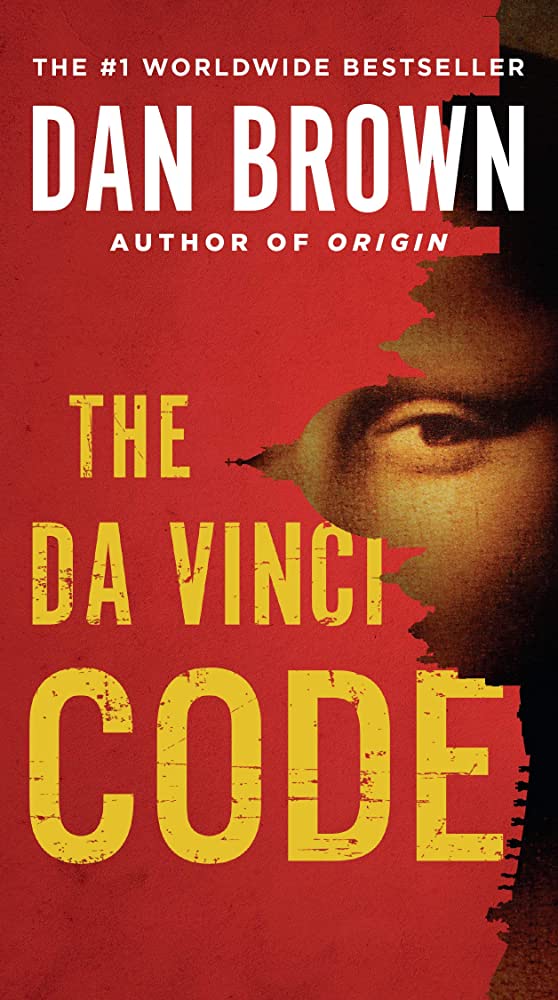
“The Da Vinci Code” is a mystery thriller novel by Dan Brown that intertwines real history, art, and religion with fictional elements. It is not a self-help or motivational book per se, but there are still life lessons and themes that one can extrapolate and apply to personal and professional development.
Value of Knowledge and Learning
“The Da Vinci Code” highlights the influence of knowledge and continuous learning through Robert Langdon, a symbologist who utilizes his deep understanding of religious history and symbolism to solve mysteries. Here are key takeaways:
- Expertise: Deep knowledge empowers and opens unique opportunities.
- Multidisciplinary Learning: Merging insights from various fields fosters creativity and adaptability.
- Lifelong Learning: Continuous growth is vital in a rapidly changing world.
- Practical Application: Applying knowledge to solve problems adds value.
- Critical Thinking: Questioning and analysing information enhance effective knowledge application.
These aspects stress the importance of acquiring knowledge, developing critical thinking skills, applying knowledge effectively, and embracing lifelong learning for personal growth.
Challenging Accepted Norms
“The Da Vinci Code” challenges accepted viewpoints and encourages questioning established norms in religion and history. This concept applies to different areas:
- Personal Growth: Question self-perceptions that limit potential.
- Career Progress: Challenge longstanding protocols for innovation.
- Relationships: Examine behaviour patterns to foster healthier interactions.
Embracing an open mind, curiosity, and a willingness to adapt are crucial. It is about improvement and growth, fostering a mindset of continuous learning and self-improvement in personal and professional development.
Interconnectedness of Disciplines
“The Da Vinci Code” intertwines art, religion, history, and science, highlighting their interconnectedness and enriching understanding.
- Interdisciplinary Insights: Langdon employs art, religion, history, and science to solve the mystery.
- Beyond Specialization: Personal growth thrives by expanding knowledge boundaries, promoting diverse perspectives and critical thinking.
- Innovation through Integration: Blending fields leads to breakthroughs, like fashion and tech merging for wearable technology.
- Deciphering Complexity: Recognizing interconnections aids in understanding complex patterns and decision-making.
- Fostering Empathy: Interdisciplinary approaches cultivate respect for diverse viewpoints, enhancing empathy and relationships.
In conclusion, “The Da Vinci Code” encourages continuous learning, curiosity, and embracing multiple disciplines for a richer understanding of the world.
Persistence
“The Da Vinci Code” highlights the power of persistence in achieving personal and professional goals, as demonstrated by characters like Langdon and Sophie.
- Overcoming Challenges: Confronting obstacles leads to growth and development.
- Purpose-Driven Resolve: A larger mission fuels determination and helps overcome hurdles.
- Adaptability: Flexibility in response to shifting circumstances is vital for persistence.
- Persistence in Uncertainty: Despite doubt, maintaining resilience is crucial.
- Learning from Mistakes: Mistakes provide valuable lessons for improvement.
The takeaway is to embrace challenges, stay motivated by a higher purpose, adapt to change, remain resilient, and learn from mistakes to harness the power of persistence.
The Intrigue of Secrecy and Mystery
“The Da Vinci Code” by Dan Brown intricately weaves secrecy and mystery, captivating readers with its plot. It involves clandestine organizations, cryptic symbols, and obscured messages, fostering curiosity and igniting pursuit of knowledge.
- Unearthing Potential: The book’s secrets mirror our undiscovered talents, inspiring personal transformation through curiosity.
- Navigating Trust: Characters’ trust decisions with secrets parallel our own choices, crucial for relationships and emotional intelligence.
- Recognizing Diverse Perspectives: The novel urges us to approach situations openly, acknowledging different viewpoints.
In conclusion, secrecy in “The Da Vinci Code” serves as a metaphor for curiosity, resilience, self-discovery, trust, and perspective—key elements in personal and professional growth.
Revisiting Religious Interpretations
“The Da Vinci Code” challenges established religious interpretations, fostering dialogue on truth and historical realities.
- Diverse Dialogues: Langdon, Neveu, and Teabing engage in vibrant discussions, highlighting the value of diverse perspectives.
- Respecting Varied Beliefs: The novel emphasizes respecting differing viewpoints influenced by individual experiences.
- Challenging Established Beliefs: Encourages critical thinking and questioning prevailing assumptions.
- Empathy Through Diversity: Exploring diverse perspectives cultivates empathy and promotes tolerance.
- Growth Amidst Disagreement: Exposure to contrasting perspectives enriches understanding and fosters personal growth.
“The Da Vinci Code” urges individuals to embrace diverse perspectives for growth, empathy, and improved communication, viewing diversity as a strength.
The Value of Trust as Seen in ‘The Da Vinci Code’
- “The Da Vinci Code” explores trust between Langdon and Sophie, influencing their survival and unravelling mysteries.
- Langdon’s trust in Sophie and her trust in his expertise are pivotal moments.
- Trust extends beyond avoiding deception and emphasizes reliance on others’ competencies and collaboration.
- Trust is crucial in life coaching, fostering an open environment and promoting growth.
- Trust in personal and professional relationships strengthens bonds, encourages collaboration, but requires discernment to avoid manipulation. It requires shared values and sustained effort.

